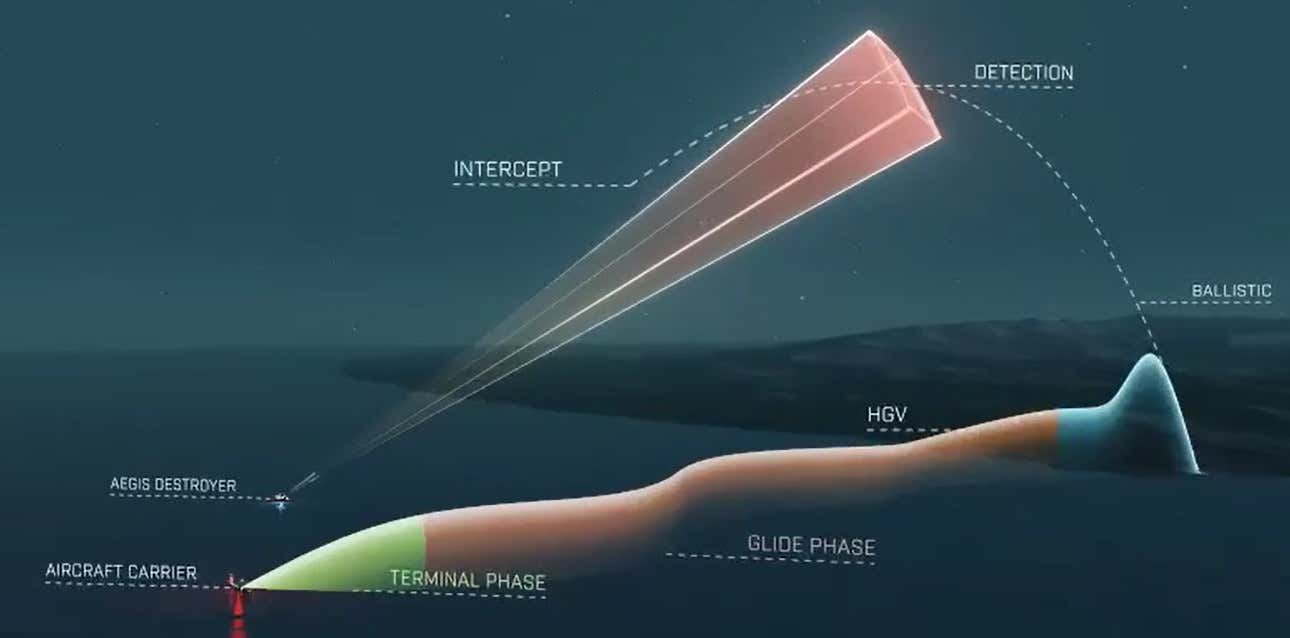Japan has finally signed an agreement with the United States to develop a missile capable of intercepting hypersonic weapons that could be used by regional adversaries like China, North Korea, and Russia.
As per statements released by the Japanese Ministry of Defense (MoD) and US Missile Defense Agency (MDA) on May 15, Japan inked a joint agreement with the US to develop a hypersonic missile defense capability aimed at countering hypersonic threats during the glide phase of a hypersonic missile’s flight.
The initiative, estimated to cost over $3 billion, was unveiled in August during a meeting between the leaders of the two nations at Camp David outside of Washington. The development of interceptors is already budgeted at ¥75 billion ($480 million) by the Japanese government for 2024.
The agreement was signed more than a year after the two allies began talks for the co-development of the hypersonic interceptor. The governments of Japan and the United States declared during their August 2023 summit meeting that they had started drafting a Glide Phase Interceptor (GPI) cooperative development pact.
In the US, the GPI project is still in its early phases of development, despite the MDA’s budget estimate placing 2030 as the date of fielding the system. Currently, two companies are competing to design the GPI: Raytheon Technologies and Northrop Grumman. Only one of them will finally be chosen.
Japan’s involvement in the project will provide a fresh impetus to the ‘Glide Phase Interceptor’ project. “In recent years, around Japan, missile-related technologies such as hypersonic weapons have improved dramatically,” the Japanese Defense Ministry said. “Strengthening interception capabilities against them is an urgent issue.”
The Japanese defense ministry said the recently inked agreement established the duty-sharing and decision-making procedure, marking the project’s first significant step. It said Japanese contractors will be selected, and the development process, which is currently led by the two US contractors, will begin by March 2025.
According to the defense ministry, Japan has set up 75.7 billion yen ($490 million) for the interceptor’s development and testing. This will include making components for Raytheon and Northrop Grumman. The MDA has calculated that the development of the hypersonic missile interceptor will cost more than $3 billion, including Japan’s $1 billion.
The project is a significant collaboration in the face of the burgeoning threat from hypersonic weapons in the arsenals of common adversaries of Japan and the US.
Unlike typical ballistic missiles, the hypersonic and glide vehicles travel at five times (or more) the speed of sound on an unpredictable trajectory. Compared to ballistic missile attacks, which can be defended with cutting-edge missile defense systems in the American inventory, hypersonic weapons are more challenging to shoot down or track since they are agile and capable of changing direction while in flight.
So, developing interceptors for these weapons is challenging and necessary. Japan’s defense ministry referred to it as a “pressing issue” and noted that there has been expansion and improvement in hypersonic weapons in the region.
Japan remains embroiled in tensions with three hypersonic weapon-wielding states, including China, Russia, and possibly even North Korea.
Going Full Throttle On Anti-Hypersonic Efforts
According to the US government’s statement, the GPI Cooperative Development Project Arrangement is covered under the bilateral Memorandum of Understanding for Research, Development, Test, and Evaluation projects between the United States and Japan.
This is the second time Japan and the US have chosen to work jointly to create an interceptor missile. The two allies had developed the Standard Missile-3 Block 2A, which has become a bedrock of defense against modern-day aerial threats.
The novel concept of GPI intends to bring down approaching hypersonic missiles during their most vulnerable glide phase of flight before they re-enter the atmosphere from space. This is in contrast to a standard defense system that is designed to intercept missiles just before they reach their objectives.
A boost-glide weapon capable of reaching hypersonic speeds is fired into the sky, where it glides until it hits its target. The greatest opportunity to intercept the missile before it begins its final high-speed descent is during its “glide” trajectory phase. This is precisely what the Glide Phase Interceptor aims to do.
MDA Chief Vice Adm. Jon Hill previously explained: “So when you’re in the glide phase — higher up from the terminal, right, where a hypersonic vehicle is likely in its most vulnerable phase — that’s a pretty tough environment. And you can’t take an air defense weapon and operate it there, nor can you take a space weapon like an SM-3 and operate there; it’s just a different environment.”

The GPI corresponds with Japan’s efforts to create “counterstrike” capabilities, which involve acquiring and creating a range of missiles that can target North Korean and Chinese missile facilities, including cruise, air-to-ground, land attack, hypersonic, and anti-ship variants.
The interceptors will be installed on destroyers with Aegis ballistic missile defense systems operated by the United States Navy. A modified Baseline 9 Aegis Weapon mechanism that tracks, engages, and detects hypersonic threats will be integrated with the weapon, which will fire from the standard vertical launching mechanism.
The development of anti-hypersonic missiles has picked up as all three countries—Russia, China, and North Korea—aggressively expand their hypersonic capabilities. While Russia has already used two of its three hypersonic weapons, the Zircon and the Kinzhal, China continues to field more advanced hypersonic weapons like the longer-range DF-27, and North Korea is alleged to have developed a hypersonic weapon of its own.
Get AfriPrime Android Web View app....Click the link to Amazon app store to download https://rb.gy/3xek46


